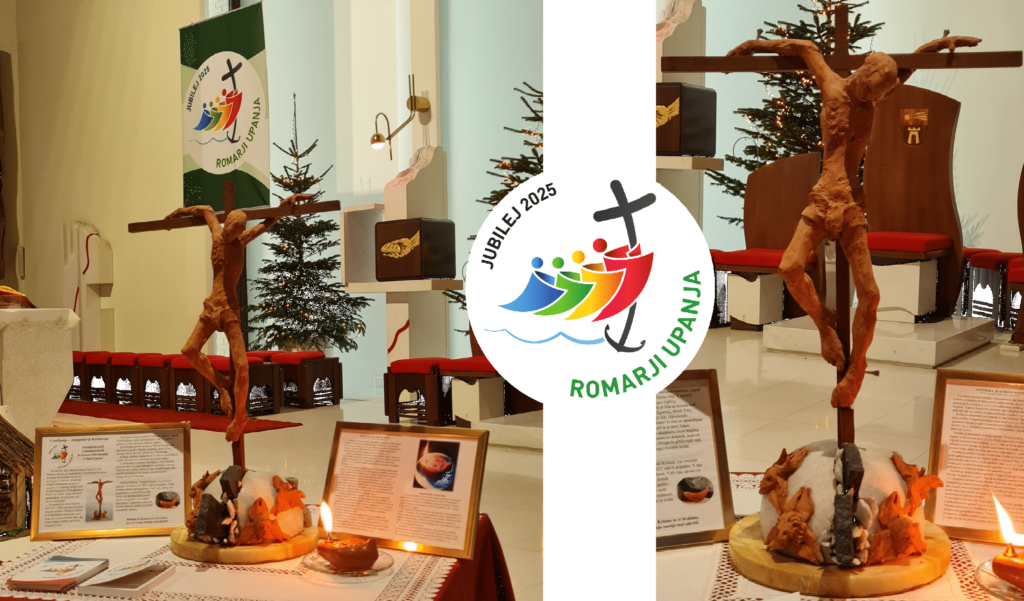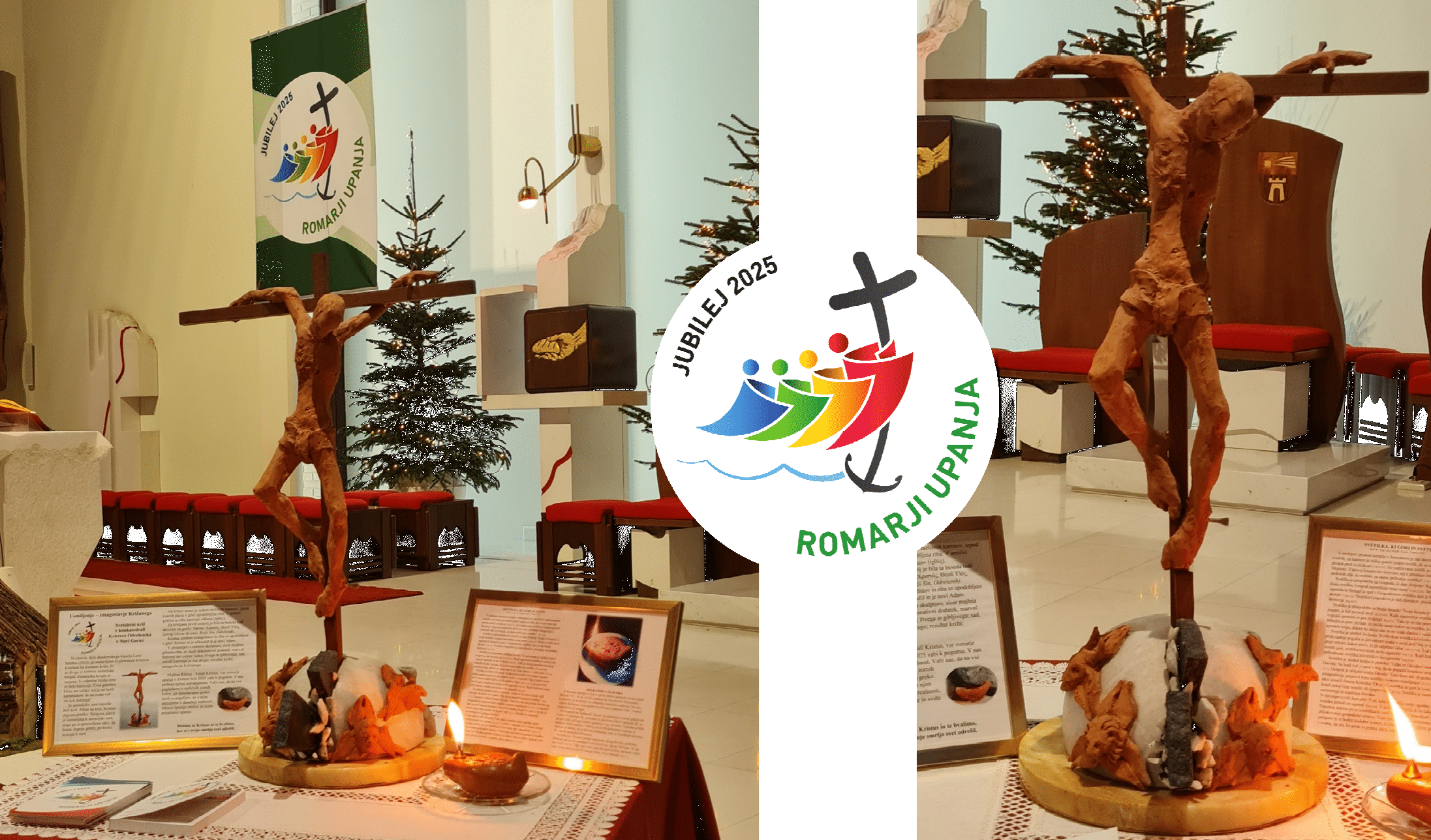The sculpture, created by academic sculptor Lan Seušek in 2015, portrays a clay corpus of Christ on a wooden cross rising from a quarter of the terrestrial globe. The globe is neither lifeless nor static but appears to be subjected to “explosions” and “earthquakes.” It features an opening—a “wound”—from which black and white stones erupt: two black granite wedges and twenty-five sharp white pebbles. The two black granite pieces are considerably larger than the white pebbles. Does this perhaps symbolize that there is more evil than good in the world? The globe’s surface is further adorned with symbols of the four evangelists, witnesses to the unfolding events, which add to the sculpture’s dynamic energy.
A cross rises high from the Earth’s wound. Nailed to the cross, Christ embraces the horizontal beam, as if the nails were unnecessary. His head leans toward the wound on the globe, and the positioning of his feet suggests a descent from the cross toward us—even though he remains nailed. This descent is not an escape from suffering but, like the merciful Samaritan, an act of entering into our wounds. The tilt of Christ’s head and the posture of his legs aptly reflect the sculpture’s title: Mercy—The Triumph of the Crucified.
On the back side. there are seven different stones, symbolizing the seven sacraments. One larger stone and six smaller ones rest atop a clay depiction of a fish, a symbol of Christ. These stones also represent the tomb from which Christ rose alive. In ancient Greek, the word for fish is ichthys (ἰχθύς). For Christians of the first centuries, this word served as an acronym for their creed: Ἰησοῦς Χριστός, Θεοῦ Υἱός, Σωτήρ (Jesus Christ, Son of God, Savior).
The sculptor used various materials: different types of stone for the base, wood for the cross, iron for the nails. Christ, the symbols of the evangelists, and the fish are modelled in clay. This symbolism ties together the narrative of Christ as the new Adam, present in the four Gospels, and represented by the fish as His enduring emblem.
All Christians—not just the pope, bishops, and priests—are called, empowered by the cross, to become sacraments of salvation for the entire world. Like fishers of men, they are tasked with rescuing humanity from the “sea of evil,” regardless of the turmoil and upheavals of the world. Within the context of the entire sculpture, the small clay fish, though seemingly modest, is not merely a decorative or insignificant addition. It is an essential element: something alive and dynamic, the fruit for which all else exists, the result of the cross, and the ultimate triumph of the Crucified.
This small fish—the Risen Christ—calls all pilgrims of hope during the Holy Year 2025 to embrace courage. It stirs within us a sense of joyful creativity, inviting us to see everything from new perspectives, to encounter Christ through the four Gospels, and to recognize Him in the reality of our time. Together with Him, we can find a way to escape the heavy stones of despair and experience liberation. We are called to be carriers of hope and sacraments of salvation for the world. The Lord blesses us with boundless flexibility, unyielding strength, steadfast trust, and an overflowing tenderness born from the triumph of His love.
Bogdan Vidmar
(Nova Gorica, 28. 12. 2024)

